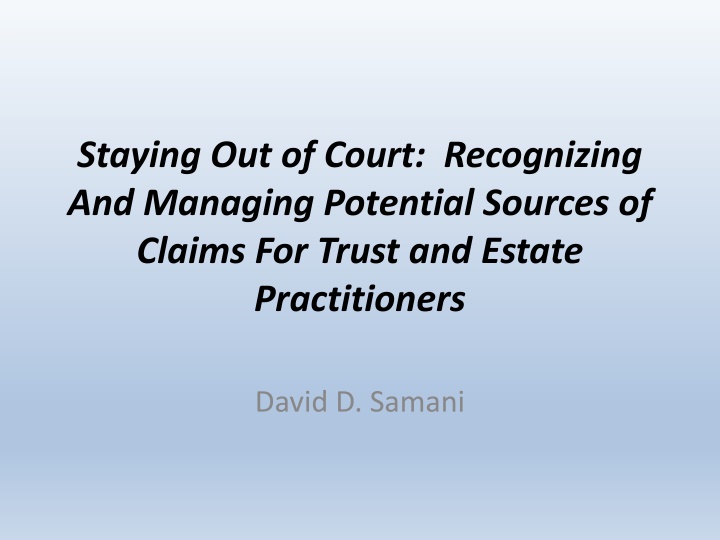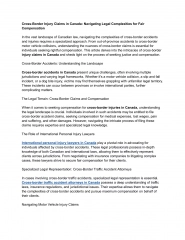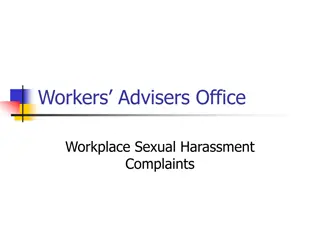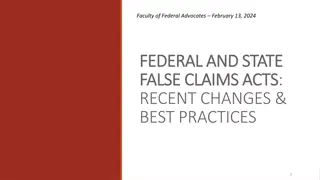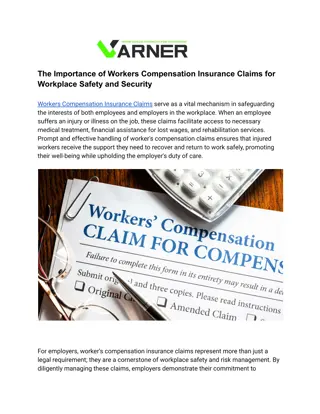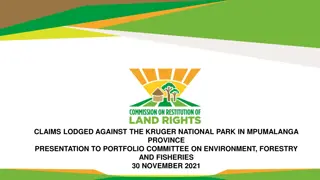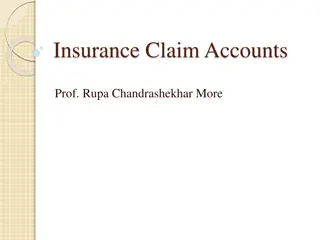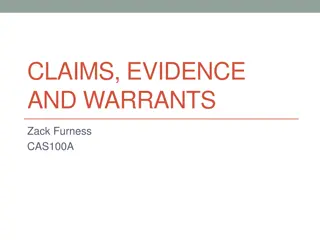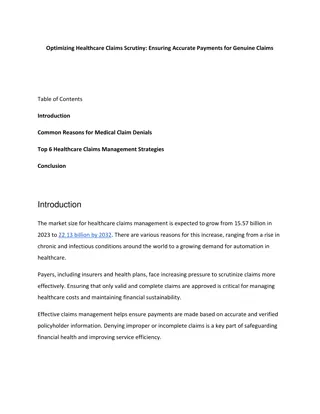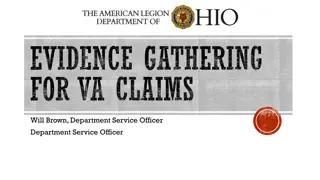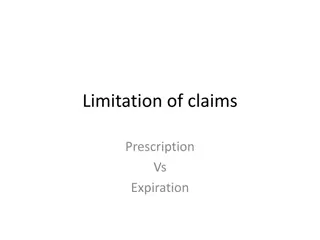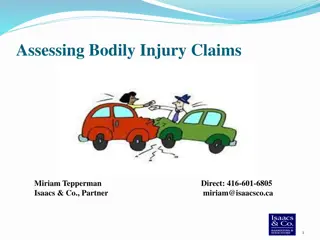Recognizing and Managing Potential Sources of Claims
Legal malpractice claims in trust and estate practice have been increasing, with a significant percentage of all claims attributed to this area. Understanding the elements of legal malpractice, breach of duty, and the standard of care is crucial for trust and estate practitioners to avoid potential claims. Stay informed and proactive to mitigate risks and maintain professional integrity.
Download Presentation

Please find below an Image/Link to download the presentation.
The content on the website is provided AS IS for your information and personal use only. It may not be sold, licensed, or shared on other websites without obtaining consent from the author.If you encounter any issues during the download, it is possible that the publisher has removed the file from their server.
You are allowed to download the files provided on this website for personal or commercial use, subject to the condition that they are used lawfully. All files are the property of their respective owners.
The content on the website is provided AS IS for your information and personal use only. It may not be sold, licensed, or shared on other websites without obtaining consent from the author.
E N D
Presentation Transcript
Staying Out of Court: Recognizing And Managing Potential Sources of Claims For Trust and Estate Practitioners David D. Samani
Introduction Legal Malpractice Claims Arising From Trust and Estates Practice On An Upward Trend Accounted for 8.7 percent of all legal malpractice claims in 1999 As of 2019, up to approximately 12 percent of all claims Source: Standing Committee on Lawyers Professional Liability Changing Demographics The United States Census Bureau projects that by 2035, there will be 78 million people aged 65 and older.
Relevant Data ABA Standing Committee on LPL 2019 Study
Relevant Data ABA Standing Committee on LPL 2019 Study
Relevant Data ABA Standing Committee on LPL 2019 Study
Relevant Data ABA Standing Committee on LPL 2019 Study
Defining Legal Malpractice A cause of action for legal malpractice has four familiar elements: (1) the existence of a duty, (2) breach of this duty, (3) a proximate causal connection between the breach and the resulting injury, and (4) actual damages. (Coscia v. McKenna & Cuneo (2001) 25 Cal.4th 1194, 1199.) When an attorney-client relationship is formed, the attorney takes on multiple duties to a client. These include the duty of loyalty, duty of confidentiality, and duty of care.
Defining Legal Malpractice Breach of the Standard of Care Generally, the conduct of attorneys only falls below the standard of care if it can be established that their advice and actions were so legally deficient when given that it demonstrates a failure to use such skill, prudence, and diligence as lawyers of ordinary skill and capacity commonly possess and exercise in performing the tasks they undertake. (See Unigard Insurance Group v. O Flaherty & Belgum (1995) 38 Cal.App.4th 1229, 1237; Lucas v. Hamm (1961) 56 Cal.2d 583, 591-592.)
Heightened Standard of Care A heightened standard of care applies to a lawyer who is (or self-defines) as a specialist. One who holds himself out as a legal specialist performs in similar circumstances to other specialists but not to general practitioners of the law. We thus conclude that a lawyer holding himself out to the public and the profession as specializing in an area of the law must exercise the skill, prudence, and diligence exercised by other specialists of ordinary skill and capacity specializing in the same field. (Wright v. Williams (1975) 47 Cal.App.3d 802, 810.)
Rule of Professional Conduct 1.1 - Competence a) A lawyer shall not intentionally, recklessly, with gross negligence, or repeatedly fail to perform legal services with competence. b) For purposes of this rule, competence in any legal service shall mean to apply the (i) learning and skill, and (ii) mental, emotional, and physical ability reasonably necessary for the performance of such service.
Rule of Professional Conduct 1.1 Competence (cont d) (c) If a lawyer does not have sufficient learning and skill when the legal services are undertaken, the lawyer nonetheless may provide competent representation by (i) associating with or, where appropriate, professionally consulting another lawyer whom the lawyer reasonably believes to be competent, (ii) acquiring sufficient learning and skill before performance is required, or (iii) referring the matter to another lawyer whom the lawyer reasonably believes to be competent. (d) In an emergency a lawyer may give advice or assistance in a matter in which the lawyer does not have the skill ordinarily required if referral to, or association or consultation with, another lawyer would be impractical. Assistance in an emergency must be limited to that reasonably necessary in the circumstances
Rule of Professional Conduct, Rule 1.3 Diligence (a)A lawyer shall not intentionally, repeatedly, recklessly or with gross negligence fail to act with reasonable diligence in representing a client. (b)For purposes of this rule, reasonable diligence shall mean that a lawyer acts with commitment and dedication to the interests of the client and does not neglect or disregard, or unduly delay a legal matter entrusted to the lawyer.
Rule of Professional Conduct, Rule 1.4 Communication with Clients (a) A lawyer shall: 1) promptly inform the client of any decision or circumstance with respect to which disclosure or the client s informed consent is required by these rules or the State Bar Act; 2) reasonably consult with the client about the means by which to accomplish the client s objectives in the representation; 3) keep the client reasonably informed about significant developments relating to the representation, including promptly complying with reasonable requests for information and copies of significant documents when necessary to keep the client so informed; and 4) advise the client about any relevant limitation on the lawyer s conduct when the lawyer knows that the client expects assistance not permitted by the Rules of Professional Conduct or other law.
Rule of Professional Conduct, Rule 1.4 Communication with Clients (cont d) (b) A lawyer shall explain a matter to the extent reasonably necessary to permit the client to make informed decisions regarding the representation. (c) A lawyer may delay transmission of information to a client if the lawyer reasonably believes that the client would be likely to react in a way that may cause imminent harm to the client or others. (d) A lawyer s obligation under this rule to provide information and documents is subject to any applicable protective order, non-disclosure agreement, or limitation under statutory or decisional law.
General Categories Of Claims Claims Relating To Preparation Of Estate Plans Claims Related To Trust And Estate Litigation Claims Related To Trust Administration
Drafters Errors Claims Asserting That Estate Planning Documents Fail To Effectuate A Decedent s Testamentary Intent Two General Categories of Claims Claims Where Error Appears On Face of Document Claims Where Error Requires An Examination Of Decedent s Intent Standing Issues Usually Must Be Assessed At The Outset
Claims Where Alleged Error Appears on Face Of Document Key Factual Allegation: No dispute about what client wanted, but the instrument fails to reflect what was desired. This type of claim is typically allowed. See, e.g., Estate of Gaspar v. Vogt, Brown & Merry, 670 N.W.2d 918 (S.D. 2003) (lawyer failed to advise about necessary waivers, spouses plan to mutually disinherit each other failed). Heyer v. Flaig, 70 Cal.2d 223 (Cal. 1969) (attorney knew of client s plan to remarry but failed to exclude future spouse from will, resulted in frustration of client s intent to leave entire estate to daughters).
Claims Where Error Is Not On Face Of Instrument Key Factual Allegation: The document does not indicate what the decedent actually intended. However, the decedent s actual intent is subject to dispute. California courts are hesitant to entertain this type of claim, for policy reasons. Chang v. Lederman (2009) 172 Cal.App.4th 67 Gordon v. Ervin Cohen & Jessup LLP (2023) 88 Cal.App.5th 547
Execution Errors Failing to Determine Capacity Typically not actionable - Compare Boranian v. Clark, 123 Cal.App.4th 1012 (Cal. Ct. App. 2004) (declining to allow claim for failure to ascertain intent or capacity) with Spinnato v. Goldman, 67 F. Supp. 3d 457 (D. Mass 2014) (declining to dismiss claims where attorney prepared estate plan despite alleged knowledge of incapacity and undue influence) Undue Influence Pay special attention to caregivers or other fiduciaries Some states consider presumptively invalid and impose special conditions if a fiduciary is to be a beneficiary (Prob. Code section 21380; Osornio v. Weingarten (2004) 124 Cal.App.4th 304.)
Error Leads To Litigation Legal Malpractice Claim Typically Follows Probate Litigation Drafting Lawyer as Witness After the Probate Litigation someone sues the lawyer
Challenging an Estate Plan Potential claims related to trust and/or probate litigation Fees and costs may diminish estate in litigation against trustee or executor
Administration and Post-Death Claims Attorneys Administering an Estate Conflicts of Interests Rule of Professional Conduct 1.7 Rule of Professional Conduct 1.9 Intricate estate plans, where administrators may also be beneficiaries, present risks of conflicts. Fees and costs of administration
Papering the File Monday morning quarterbacking and second-guessing trial tactics or strategy are often used in claims against attorneys Usually one person s word against another, so best defense involves documentation of key decisions and strategies in writing
Papering the File Engagement Agreements Engagement Agreements can play a key role in avoiding or defending legal malpractice claims Opportunity to define the scope of a representation Rule of Professional Conduct, 1.2, subdivision (b) allows a lawyer to limit the scope of the representation if the limitation is reasonable under the circumstances, is not otherwise prohibited by law, and the client gives informed consent. Engagement letters can also play a significant role in reducing the frequency of billing disputes and should go beyond the mere recitation of billing rates and cycles to include conduct and management of the firm and client relationship
Papering the File Faxes, emails, and letters (certified/regular) prove most helpful, contemporaneous memoranda to the file may also aid in defense Prepare writings that explain reasons decision was made If possible and appropriate, confirm in writing that client shared in making decision With respect to appeals, be sure to document that you were instructed not to file or perfect same All important decisions made by phone or in person should be memorialized in writing Credibility issues, determined without documentation, usually favor the client Document all settlement discussions If you are outgoing counsel, substituted out, or ask to be relieved: always make and keep a copy of your file
Cessation / Declination of Representation The use of non-engagement and disengagement letters can help reduce or defend claims Transmission of a non-engagement letter can help eliminate a later claim of an attorney-client relationship Best Practices Advising of any applicable timing issues Retaining information from potential or former clients for future conflict searches
Cessation / Declination of Representation Disengagement (or termination) letters should be sent to a client to mark the end of a representation. Useful for establishing an endpoint to the attorney-client relationship. Conflicts of Interest Statute of Limitations
Client Selection And Management Intake Procedures Conflicts of Interest Nature, Scope of Assignment Client Goals Factual Investigation Attention Should Be Paid To Family Dynamics Clients that have had multiple spouses, children from different spouses may require more attention Understanding the relationship with different beneficiaries. Possible claims of undue influence? Caretakers? Practitioners should aim to obtain this information at the outset
Client Selection And Management Manage the client s expectations key to avoiding malpractice claims Be wary of a client whose expectations are unreasonable Avoid guaranteeing a particular result or outcome Brief client on all possible outcomes of meetings, motions, hearings, and cases to avoid claims
Client Selection And Management For clients billed hourly, be wary of the Accounts Receivable Problem Open lines of communication; avoid surprises Lawsuits for fees
Client Selection And Management Diligence in representation Ensuring that estate plans are complete prior to client s death. Papering the file. Critical both in estate planning and estate administration. Independent reviews Useful to combat claims regarding intent, capacity. May be helpful in rebutting claims of undue influence
Client Selection And Management Potential Red Flags Changing lawyers/firms? Complain about your bills? Not entirely honest, either with you or in the legal proceedings? Motivations? Personality issues?
Other Protective Procedures Understanding and calendaring key dates Beware the risk of dabbling It is the duty of an attorney who is a general practitioner to refer his client to a specialist or recommend the assistance of a specialist if under the circumstances a reasonably careful and skillful practitioner would do so. (Horne v. Peckham (1979) 97 Cal.App.3d 404, 414.) Knowing one s own limitations. Clients dealing with highly sophisticated or complicated estates perhaps should consider declining assignment Alternatively, associating counsel with expertise Size of estate larger estate, larger potential exposure
Possible Insurance Considerations Tendering Early Insurance policy may allow defense counsel to get involved early Estate planning attorneys may often be called upon to provide testimony in underlying proceedings Deposition subpoenas Affidavits / declarations
Possible Insurance Considerations Early monitoring of underlying proceedings Possibility of claim repair The best defense is a good offense? Typically more of a consideration in cases involving administration Petitions for Reformation, Instruction
Possible Insurance Considerations Even if not the domain of defense counsel, coverage matters may have implications for the defense of case. Potential issues with defense vs. indemnity depending on policy, state law Claims involving fee issues Attorney acting in dual role, or as trustee May be particularly sensitive where estate or trust has limited assets.
Possible Insurance Considerations Things to keep in mind Policy limits vs. size of estate Reservation of rights?
